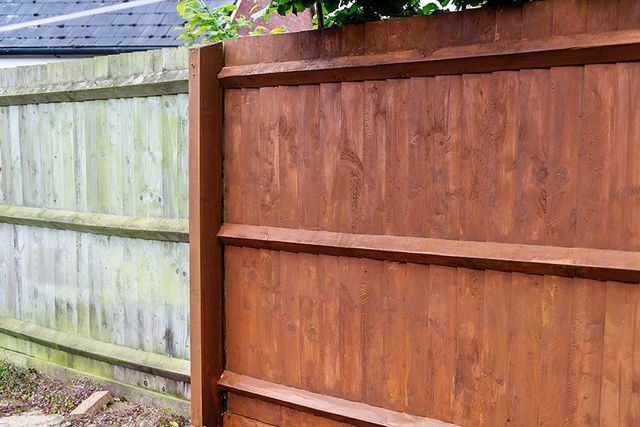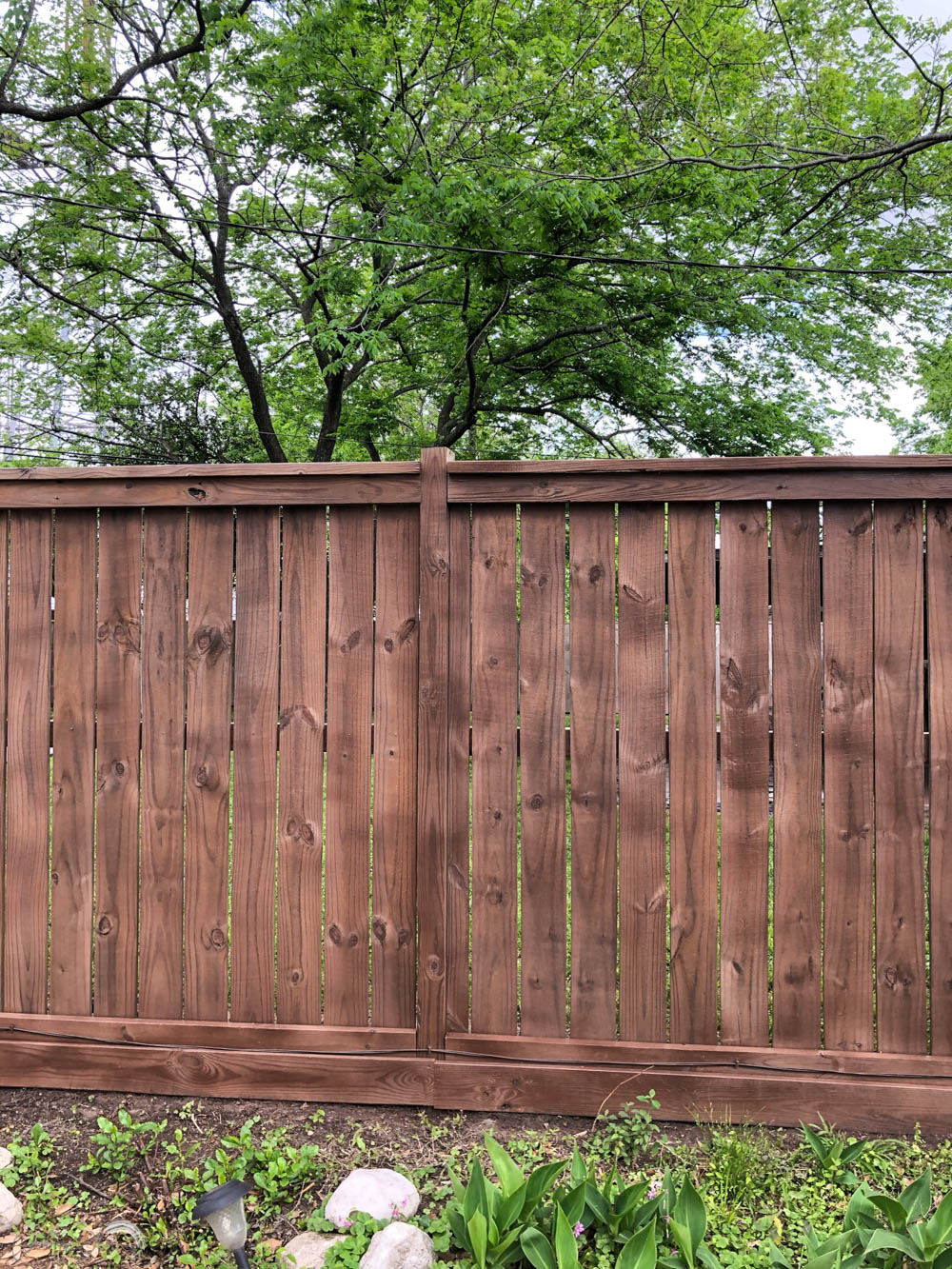Essential Tips for Deck Discoloration Success
Achieving a flawlessly stained deck requires more than just a brush and a can of tarnish. The trick to an effective deck discoloration job lies in the meticulous attention to detail and adherence to vital steps. From selecting the right sort of tarnish to grasping the art of application, each stage plays an important function in the final outcome. Whether you are a seasoned do it yourself lover or starting your first deck discoloration experience, comprehending the nuances of the procedure can make all the distinction in the durability and visual allure of your outside area.
Picking the Right Spot
Selecting the ideal tarnish is vital in accomplishing a resilient and visually pleasing surface for your deck. fence staining companies franklin. When selecting a stain for your deck, it is important to take into consideration aspects such as the wood kind, preferred color, degree of defense needed, and upkeep preferences
Firstly, think about the kind of timber your deck is made of, as various wood varieties might react differently to particular types of discolorations. Hardwoods like oak or mahogany might need various spots contrasted to softwoods like want or cedar. Understanding the features of the wood will certainly help you pick a stain that passes through efficiently and boosts its natural appeal.
Next, think of the shade you desire for your deck. Stains are available in a selection of hues, from natural tones that enhance the wood's grain to even more opaque shades that give much better UV defense. Choose a shade that enhances your outdoor area and matches your visual preferences.
In addition, evaluate the degree of defense the discolor deals. Some stains supply extra substantial defense versus UV rays, moisture, and mildew, which can extend the life of your deck. Stabilizing security with looks is vital to achieving a visually appealing and resilient coating.
Preparing the Deck Surface Area
To ensure an effective application of the picked tarnish, comprehensive preparation of the deck surface is necessary. Beginning by cleansing the deck thoroughly to remove dirt, debris, and any previous finishings. Make use of a deck cleaner or timber brightener along with a stiff-bristled brush to scrub the surface area tidy. Pay close focus to locations vulnerable to mold and mildew and mold development. After cleaning, permit the deck to dry entirely prior to continuing.
Replace or fix these as required to make sure the architectural honesty of the deck. This action not only aids the discolor adhere far better however likewise improves the overall appearance of the deck.
Using the Spot Properly

Begin by extensively blending the stain to ensure an even consistency. Utilize a paint stirrer to mix the tarnish well, especially if it has been sitting for a while. When applying the tarnish, make use of a paintbrush, sprayer, or roller , depending upon the sort of stain and the size of the deck. Work in manageable areas to stop the tarnish from drying out erratically. Use the discolor in the instructions of the wood grain to guarantee even coverage and a professional finish.
If a 2nd coat is necessary,Permit the very first coat to completely dry totally before determining. Comply with the producer's guidelines relating to drying times and reapplication. Correct application of the discolor is important for safeguarding your deck and improving its appearance for several years to find.
Maintaining Your Discolored Deck
After efficiently using the tarnish to your deck, keeping its look and protective qualities is essential for long-lasting toughness and visual charm. Routine maintenance is key to preserving the charm and integrity of your stained deck. Dealing with problems without delay can stop them go from getting worse and expand the life of your tarnished deck.

Troubleshooting Common Issues
Identifying and resolving common problems that might arise with your discolored deck is crucial for ensuring its long life and optimal performance. One typical discover here trouble is peeling off or flaking of the discolor.
An additional concern typically run into is mold and mildew and mildew growth on the deck surface area. This can be attributed to moisture retention, lack of sunlight, or incorrect air flow. To tackle this trouble, an extensive cleansing with a mold and mildew and mold remover followed by appropriate drying out and application of a mold-resistant tarnish is crucial.
Additionally, fading of the discolor shade gradually is a widespread problem. UV exposure and severe weather condition can trigger staining. To resolve this, picking a high-grade, UV-resistant stain and applying a fresh coat regularly can assist preserve the deck's visual charm.

Final Thought
To conclude, successful deck staining calls for selecting the right tarnish, appropriately preparing the deck surface, using the stain appropriately, and keeping the stained deck. By adhering to these necessary suggestions, you can achieve a beautifully tarnished deck that enhances the total appearance of your exterior area. Bear in mind to fix any type of typical problems that might emerge throughout the discoloration procedure to ensure a visually attractive and durable result.
Attaining a perfectly stained deck needs more than just a brush and a canister of tarnish.To guarantee an effective application of the chosen discolor, thorough preparation of the deck surface area is vital. When applying the discolor, use a roller, sprayer, or paintbrush , depending on the kind of discolor and the size of official website the deck.Identifying and resolving common concerns that might arise with your discolored deck is necessary for guaranteeing its durability and ideal efficiency.In verdict, effective deck staining requires choosing the best discolor, effectively preparing the deck surface area, using the tarnish correctly, and maintaining the stained deck.